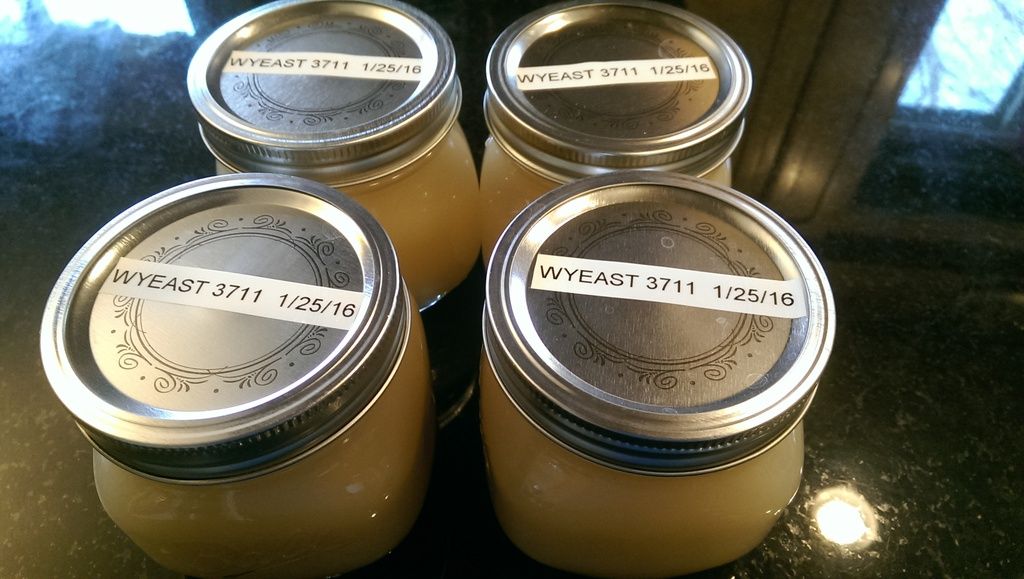Every description I've read of this process (which I've done a half dozen times) says that after I've added some (.5-1 gallon) sterilized water to the yeast/trub cake left after racking from primary, and given it a couple of minutes of swirling/shaking, I should see two layers develop, one a lighter, creamy color that is yeast, and, below that, a darker layer that is supposed to be trub. When I do that, I get three layers, one that is sort of a clear amber (which I assume is mostly the water I've added), then a middle layer that is darker than a bottom layer that is sort of creamy and light. The instructions say to pour off the top, creamy layer, but they are not clear as to whether I'm supposed to decant the top layer of mostly water or pour that with the middle layer. Even though my middle layer is always a bit darker than the bottom layer, can I assume that that layer is, in fact, mostly yeast?
After I've poured off the top two layers (lately, I've been decanting about half of that top layer of mostly water) into a large, sterilized jar, the instructions say to let that settle for an hour or more. They say I should then see three layers. On top should be a pale mixture of water with some yeast. The middle layer should be thinner and more solid white. This is, supposedly, almost pure yeast. Finally, at the bottom is supposed to be another, darker layer that is almost all trub. Again here, I get a pale top layer, a middle layer that is a bit darker than a bottom layer that is whiter. Both of the bottom two layers are about the same thickness. After it has all settled, I am supposed to carefully pour off the top two layers into 3-4 sterilized pint jars. Here, if you have used 3/4 or a full gallon of sterilized water to start with, there's definitely not room for more than about 3/4 of the top layer (some yeast, but mostly water). And by the time I've poured that off, the bottom two layers are getting pretty mixed together.
So I am hoping for some help/advice.
Should I be decanting off some of the mostly water layer in both steps?
Should I assume that the middle layer (in both steps) is, in fact, mostly yeast even though it is never lighter in color than the bottom layer?
Thanks for any help you can offer.




 I decanted off nearly all the liquid and pitched it just to see what happens. The question is, what's the likelihood this will take off, and will this cause any off-flavors in my brew this weekend? Cheers!
I decanted off nearly all the liquid and pitched it just to see what happens. The question is, what's the likelihood this will take off, and will this cause any off-flavors in my brew this weekend? Cheers! 

